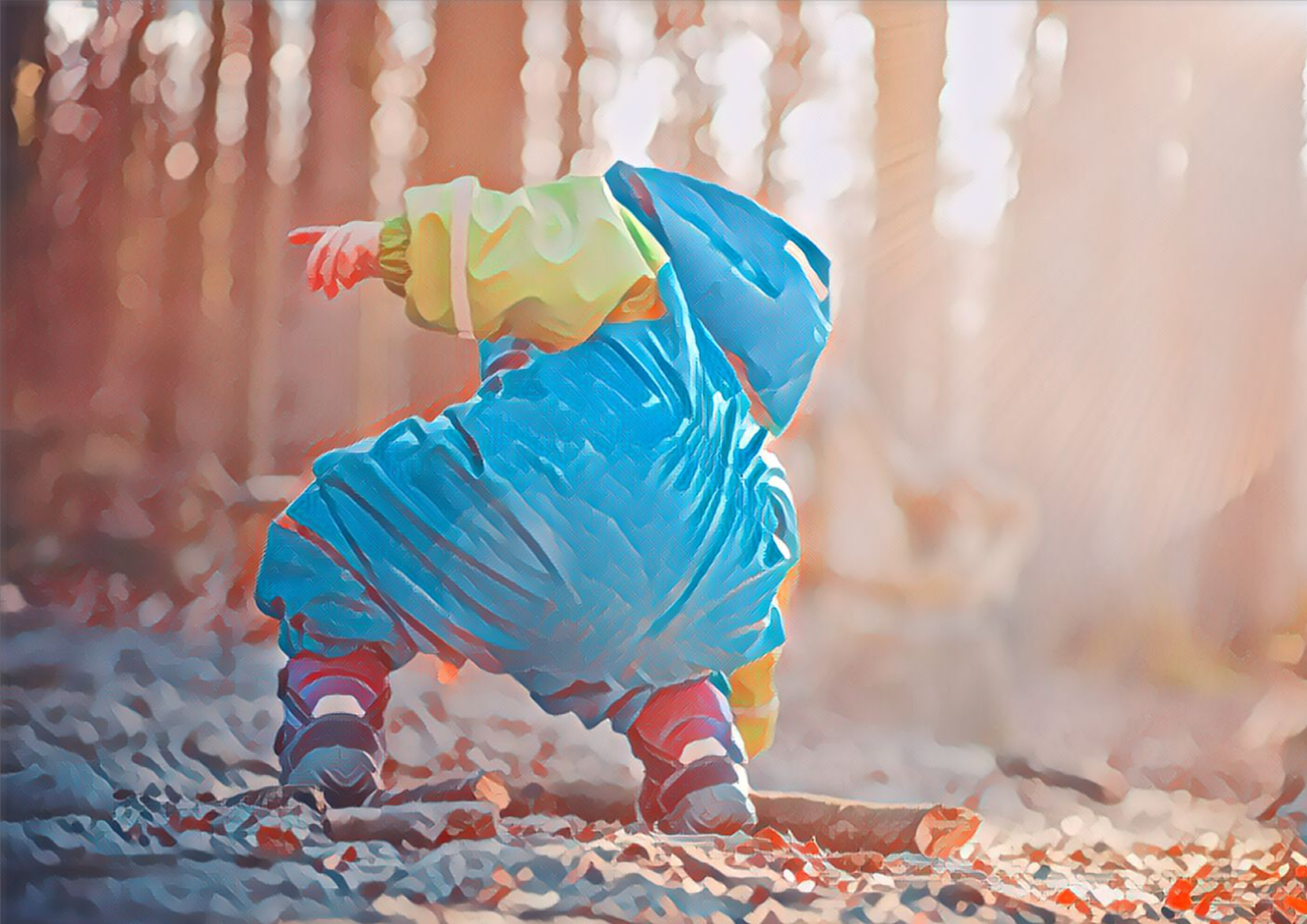6 Children with Nature: Environmental Identity and Holistic Development

“Nature is a tool to get children to experience not just the wider world, but themselves.”
– Stephen Moss
Brief Overview
The early years are now widely recognized as a critical period in the lifespan where the foundation of our development and who we will become as people is laid. However, the importance of this time in relationship to children’s connection to the natural world is not as often explicitly discussed.
Environmental Identity Development (EID) attempts to break down this process by looking at how human relationships to the natural world are impacted through experiences and interactions, and the particular impact of early childhood experiences and interactions. While human relationships to the natural world are not static, experiences and interactions in the early years have been shown to be particularly impactful on how people relate to the natural world later in life (Green, 2017).
Knowing this, educators have a unique opportunity to support and nurture this relationship through their nature pedagogy and practices related to outdoor and nature play. Beyond the importance of this relationship itself, outdoor and nature play have both been shown to support children’s holistic development in ways that are not possible indoors, offering possibilities for learning that are connected and deeply personal.
Key Takeaways
This flashcard activity provides examples of the four progressions of Environmental Identity Development (Green, 2017). Read the story on the first flashcard and press the ‘turn’ button to view which progression the story is representing. The next button will take you to a new story, there are eight flashcards.
Additional Resources
Outdoor Play Matters: The Benefits of Outdoor Play for Young Children
Check out this booklet on outdoor play, a wonderful resource written by Marie Willoughby that offers many concrete examples of how outdoor nature play supports children’s holistic learning [PDF].
What Are the Most Memorable Things You’ve Seen or Experienced in Nature?
This article in The New York Times explores human memories and relationships to nature, offering insight into EID throughout the lifespan and the impacts of experiences and interactions with nature.
Reflect
Think about your own interactions with children
Can you think of examples from your own interactions with children where you supported positive EID? Examples where you may have inadvertently negatively impacted a child’s EID? If you haven’t yet had interactions with children as an adult, what about interactions you had with adults as a child yourself?
Reflecting on these experiences now, how do you view them differently?
Experience
How does being outdoors and with nature support you holistically?
Do something you love outdoors with nature. if you are just starting to reconnect with the natural world keep it simple and allocate 15 minutes to sit and be present.
Afterwards, think about how being in nature supports the physical, personal, cultural, social, emotional, creative, and/or spiritual dimensions of who you are and the learning that occurs through this.
- Reflect on how you felt before this activity, during, and after. Did anything change?
- Was it challenging for you and if so, how and why?
- What did you think about while you did this?
References
Green, C. (2017). Children environmental identity development in an Alaska native rural context. International Journal of Early Childhood, 49, 303-319.

